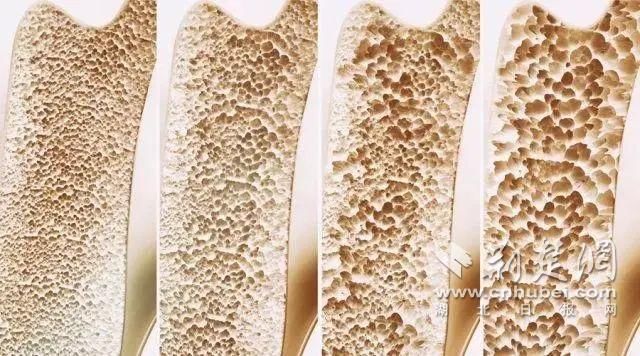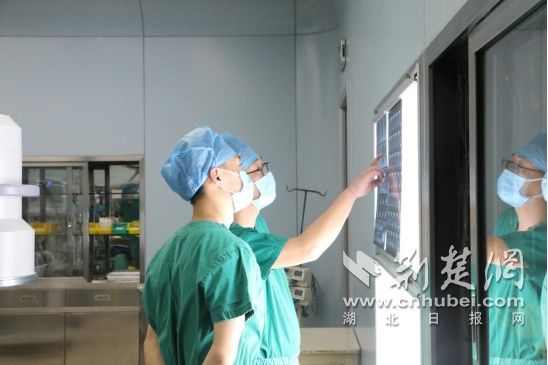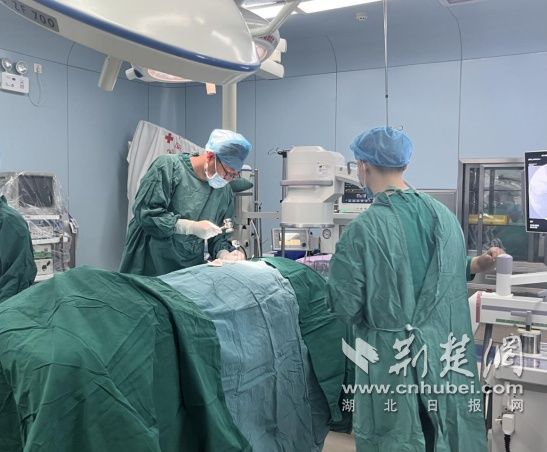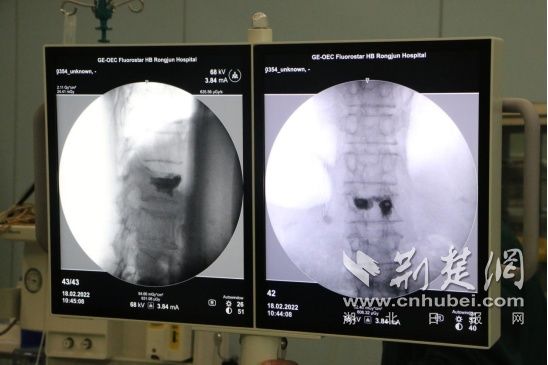Jingchu Net (Hubei Daily Net) News (Correspondent Sun Sihai) It is said that elderly fractures are a forbidden area for surgery. At the beginning of the Chinese New Year in 2022, Hubei Province Invalids Hospital welcomed such a patient.
Examination found fractures in the elderly
On the morning of February 11, Zhang Jin, deputy director of the Department of Geriatrics of the Provincial Invalids Hospital, was receiving a consultation. An old man accompanied by his family members came to the consultation room.
The old man, surnamed Zhou, is 97 years old and lives alone at home. He complained of unbearable low back pain until he was bedridden, so he was sent to the Provincial Invalids Hospital by his family.
“The old man was once diagnosed with electrolyte imbalance, combined with a variety of underlying diseases, and requires long-term conditioning.” According to the family, the old man is now in poor spirits and has a loss of appetite.
“Low back pain is a common disease of the elderly. Most of the low back pain is caused by the decrease in the density of the bones and the increase in the fragility of the bones, which is what we often call ‘osteoporosis’.” Zhang Jin’s preliminary diagnosis Afterwards, arrange an examination for the elderly immediately.
“The image shows that the elderly have fractures in the waist.” Zhang Jin said that when the quality of the bones in the whole body decreases and the bone density is too low, daily activities, minor trauma or vigorous coughing may cause fractures.

Osteoporotic bone changes. Photo courtesy of the correspondent
According to the examination results, Zhang Jin’s Department of Geriatrics contacted the Second Department of Surgery of the hospital to organize a consultation, and the final diagnosis was “lumbar 1 vertebral body compression fracture”. The treatment of Mr. Zhou was also taken over by the Second Department of Surgery.
The diagnosis result came out, but how to treat it has become a difficult problem for the medical team of the Second Department of Surgery.
Determine the treatment plan
“Conservative treatment is not easy to relieve pain, patients must be in bed for a long time to recuperate, and it is easy to cause a series of complications such as urinary tract infection, chronic pain, bedsores, etc., and it will bring physical and mental disorders to elderly patients and cause a decline in the quality of life.” Wai 2 Du Bing, director of the department, and the medical team thought about it again and again, and decided to implement a minimally invasive surgery for the elderly with less trauma, fewer complications and faster recovery – “percutaneous lumbar 1 vertebral balloon dilatation”.

The medical team discusses treatment options. Photo courtesy of the correspondent
“The operation is not complicated, but the difficulty lies in the elderly’s age, poor tolerance of surgery and anesthesia, and a variety of underlying diseases.” Du Bing said bluntly, the focus is on perioperative management, which tests the hospital’s comprehensive treatment capabilities.
“Surgery for the elderly is a challenge for anesthesiologists.” Zhang Dan, head nurse of the anesthesiology department, introduced that the multiple organs of the elderly will decline to varying degrees, and both anesthesia and surgery may cause damage to important organs. Inadvertently, it may bring risks to the patient’s life, and it is necessary to obtain the support of the patient’s family.
The communication with the family was surprisingly smooth, “We know the risks, and we trust the doctor.” said Mr. Zhou’s family.
After completing the relevant examinations, the Second Department of Surgery organized a multidisciplinary joint consultation including the Department of Geriatrics, the Second Department of Internal Medicine, the Department of Integrated Traditional Chinese and Western Medicine, and the Department of Anesthesiology. After thorough discussions, detailed surgical and postoperative treatment plans were formulated.
The operation went smoothly
On February 18, the surgery began. The doctor makes an incision the size of a soybean on the patient’s back, enters the diseased vertebral body through a puncture needle, uses balloon expansion and pressurization to reset the compressed vertebral body, stretches the fracture site, and injects the prepared bone cement to restore the height of the vertebral body.

Surgery scene. Photo courtesy of the correspondent
“Bone cement can increase the strength and stability of the vertebral body, prevent the vertebral body from collapsing, and relieve pain.” After the operation, the doctor said, “The distribution of the bone cement must be checked through a fluoroscopy during the injection process to prevent leakage of the bone cement.”< /p>

Surgery scene. Photo courtesy of the correspondent
The operation lasted for nearly an hour, and Mr. Zhou felt no pain or discomfort.
“The successful implementation of the operation has accumulated experience for the hospital to carry out fracture surgery for the elderly.” Du Bing said, they will follow up the patients by telephone and give advice on rehabilitation exercise, so as to provide continuous support for improving the quality of life of patients after surgery. Complete medical service.
It is understood that percutaneous vertebral balloon dilatation is a minimally invasive spinal surgery, mainly used for vertebral compression fractures of osteoporosis. The symptoms have obvious effect, and it has the characteristics of low complications and good long-term effect of surgery. After the operation, the patient only needs to put on a few Band-Aids, and he will not feel particularly uncomfortable, and he can get out of bed the next day.
(Jingchu Net)